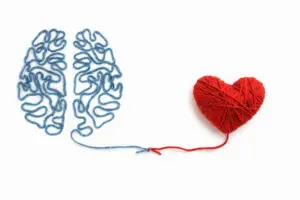
The following are some EMDR essentials that occur before the reprocessing part of EMDR can start:
- Creating a safe and trusting relationship with a provider: Our bodies and minds need to feel safe in order to do the hard work. This is one of the reasons we believe that finding the right fit between therapist and client is essential.
- Gathering personal history: The provider gathers background information and gains an thorough understanding of you and and your trauma. This part of EMDR flows nicely with traditional talk therapy.
- Identifying a plan for reprocessing: The provider gains an understanding about the trauma and, with the client, builds a “map” for what needs reprocessing using EMDR. To create this map, the therapist and client work collaboratively to Identify the most difficult points in recalling the trauma, along with any associated images, thoughts, feelings, and body sensations.
- Resourcing: The provider helps the client establish many positive and peaceful images to use throughout EMDR. Together, the provider and client build a repertoire of positive images, supportive figures, calm/peaceful places, containment strategies and ways for the client to feel safe while doing the work. This also enables the client to have the needed tools to contain the trauma when needed.
Once these essential pieces have been set up, the reprocessing phases of EMDR can begin:
- Reprocessing the trauma: The therapist helps cue images, thoughts, emotions, and body sensations. Then, while undergoing bilateral stimulation, the therapist guides the client through the reprocessing process. During this process, clients may experience intense feelings and emotions, memories, and body sensations. This is all a normal part of reprocessing the trauma and are signs that your brain and body are healing.
- Containment: Each session ends with containment of any unprocessed trauma or negative thoughts. The therapist works with the client and their resources to create positive, peaceful imagery so that the client can leave the session feeling calm and safe.
EMDR takes a 3-pronged approach in order to clear out the past trauma, undo present triggers, and set up a positive future. The above sections deal with the past trauma and present triggers. After completing those phases of EMDR, the final phase occurs:
- Future Templating: Once the map is completed and all targets on the map are reprocessed, the therapist guides the client through “future templating”. This process consists of using bilateral stimulation while imagining a similar, future scenario but with a different outcome. For example, if the client is working on public speaking and reprocessing a time they felt humiliated while speaking in public, the future templating might be imagining an upcoming work presentation that is successful.

If you are interested in finding out more about EMDR, consider booking a consultation with one of our clinicians. Erin Staniszeski, LCSW, Dr. Karmen Thulin, PsyD, and Mary Miller, LCSW are all currently accepting new clients.




